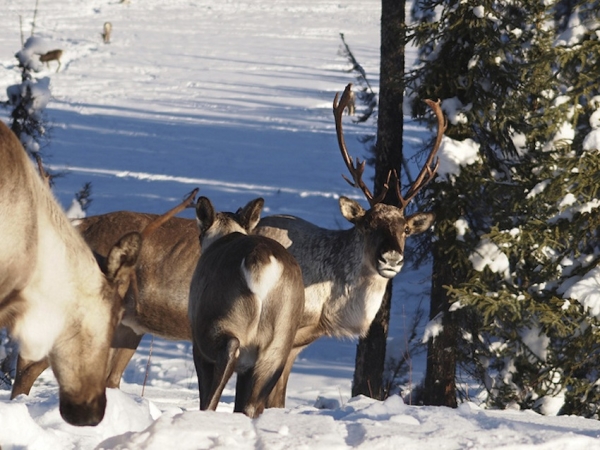The Ministry of Forests, Lands and Natural Resource Operations is taking immediate action to save caribou herds under threat from wolf predation in two separate and targeted actions: one in the South Selkirk Mountains and the other in the South Peace, according to a press release.
The South Selkirk herd is at high risk of local extinction. The population has declined from 46 caribou in 2009 to 27 in 2012, and to 18 as of March 2014. Evidence points to wolves being the leading cause of mortality.
The South Selkirk is a trans-boundary herd, and caribou move freely between B.C., Washington and Idaho. Officials from B.C., Washington and Idaho States, First Nations, the U.S. Forest Service and the U.S. Fish and Wildlife Service have been working together on a research project and have collared six of the remaining 18 caribou to help investigate the cause of decline. Wolves have killed two of the remaining caribou (11% of the herd) in the past 10 months.
Ministry staff will aim to remove up to 24 wolves by shooting them from a helicopter before snow melt, according to the release.
In four caribou herds in the South Peace (Quintette, Moberly, Scott and Kennedy-Siding), populations are also decreasing and wolves are a key factor. At least 37% of all adult mortalities have been documented as wolf predation.
Working in partnership with Treaty 8 First Nations, the ministry’s goal is to remove up to 120-160 wolves in the South Peace, again by shooting them from a helicopter before snow melt. Caribou populations in a larger South Peace herd (Graham) will be monitored, but receive no predator control measures, in order to allow for comparison on the effectiveness of the program.
Hunting and trapping of wolves have not effectively reduced populations and may even split up packs and increase predation rates on caribou. Habitat recovery continues to be an important part of caribou recovery, but cannot address the critical needs of these herds in the short term.
The operational plans for both the Selkirks and South Peace have been independently peer-reviewed.
In 2012, the B.C. government endorsed a Peace Northern Caribou implementation plan to increase the population of seven Northern Caribou herds in the south Peace area of B.C.
The Peace Northern Caribou Plan (PNCP) commits government to:
Protect 90% (approximately 400,000 hectares) of identified high-elevation winter caribou habitat across the South Peace through a combination of existing and new habitat protections.
Implement caribou population management activities to support population recovery and opportunities of First Nations’ caribou harvest.
Develop management objectives and best management practices in lower-elevation winter caribou habitat to minimize habitat fragmentationand support long-term habitat conditions.
Offset requirements under the PNCP require at least four hectares of suitable caribou habitat to be set aside for every one hectare a company wishes to develop.
Despite these efforts, the caribou herds are currently in decline, and immediate action must be taken to prevent their local extinction, said the report.
There are seven herds form the caribou populations in the South Peace. The populations of these herds are:
– Quintette: 98-113 caribou
– Moberly: 22 caribou
– Scott: 18 caribou
– Kennedy Siding: 25-35 caribou
– Burnt Pine: one bull caribou (herd is now locally extinct)
– Narraway: 74 caribou
– Graham: 708 caribou (based on a 2009 census)
The goal of this plan is to increase the population of these seven herds to more than 1,200 animals across their range within 21 years.




Leave a reply